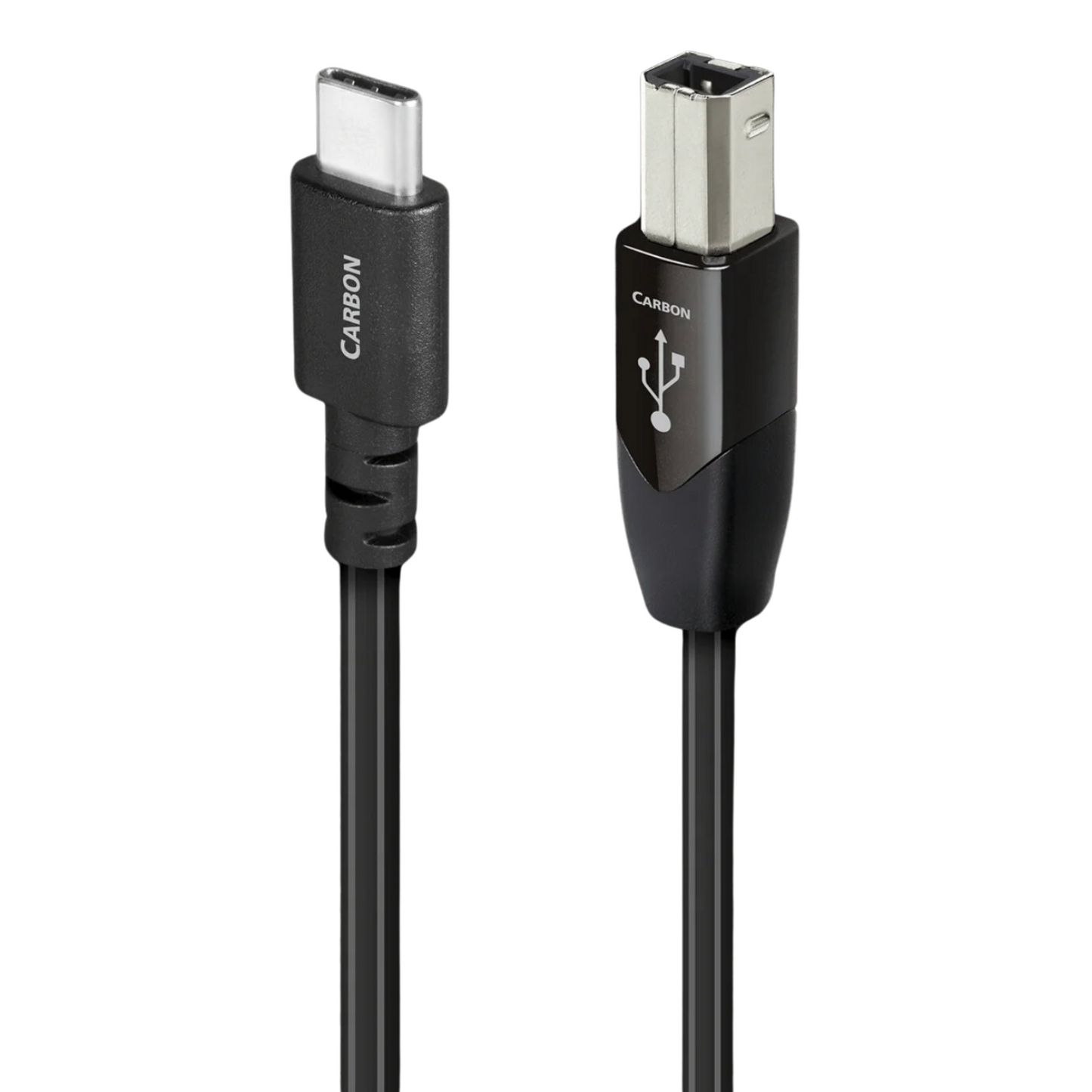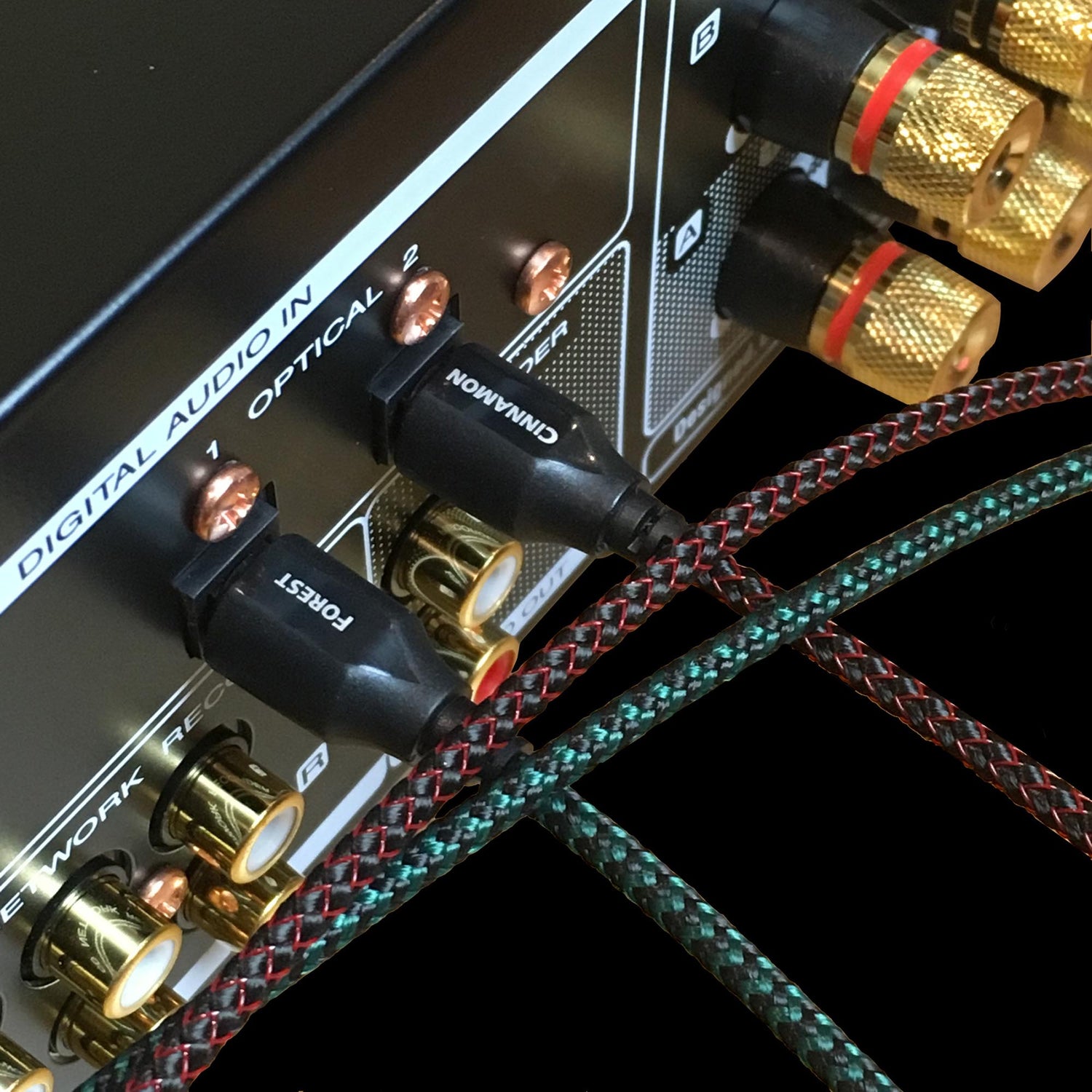
About The AudioQuest Carbon USB C to B Cable
The AudioQuest Carbon USB C to B Cable with semi-solid concentric 5% Silver conductors is what you need if you're starting to get serious about your USB cables. Its multi-layer carbon-based noise-and crosstalk-dissipation system is unique to AudioQuest and shows their commitment to high quality cable design.
USB cables have become ubiquitous in our lives and you would be hard placed to find anyone who doesn't own quite a collection. USB C is the new kid on the block, is smaller than most other variants and is, thankfully, reversible so there's no guessing which way around it goes, it just works every time.
USB Type C connections are fast becoming the norm on many devices because of their fast transfer rates. This Carbon cable ensures those transfers also occur with minimal noise and interference. And the design also reduces the timing errors or "jitter" that can make digital music sound less focused.
Semi-Solid Concentric 5% Silver Conductors: AudioQuest is known for their superior build quality, and this Carbon USB cable is a great another example of their research and development team hard at work. The Carbon USB C to B cable features Semi-Solid Concentric 5% Silver Conductors to greatly reduce strand-interaction distortion and reduce jitter. Silver-plated conductors are excellent for very high-frequency applications, like USB audio. These signals, being such a high frequency, travel almost exclusively on the surface of the conductor. As the surface is made of high-purity silver, the performance is very close to that of a 100% silver cable, but priced much closer to a copper cable. This is an incredibly cost effective way of manufacturing very high-quality USB cables. In addition, all conductors are controlled for RF noise directionality.
Multi-Layer Carbon-Based Noise-And-Crosstalk-Dissipation System: This cable's negative conductors are covered with partially conductive Carbon-Loaded Polyethylene. This remarkable material reduces radio-frequency garbage being fed back into the amplifier. The sonic benefit is exactly the same reduction in "hash" and improved dimensionality that comes whenever RF interference is reduced in an audio circuit. In addition, a carbon layer damps interaction between positive and negative conductors, and an external Carbon-Based NDS System reduces external interference.
Hard-Cell Foam Insulation: Hard-Cell Foam (HCF) Insulation ensures critical signal-pair geometry. Any solid material adjacent to a conductor is actually part of an imperfect circuit. Wire insulation and circuit board materials all absorb energy. Some of this energy is stored and then released as distortion. Hard-Cell Foam Insulation is similar to the Foamed-PE used in AudioQuest's Bridges & Falls cables and is nitrogen-injected to create air pockets. Because nitrogen (like air) does not absorb energy and therefore does not release any energy from or into the conductor, distortion is reduced. In addition, the stiffness of the material allows the cable's conductors to maintain a stable relationship along the cable's full length, producing a stable impedance character and further minimizing distortion.
Direction-Controlled Conductors: All drawn metal strands or conductors have a non-symmetrical, and therefore directional, grain structure. AudioQuest controls the resulting RF impedance variation so that noise is drained away from where it will cause distortion. The correct direction is determined by listening to every batch of metal conductors used in every AudioQuest audio cable. When applicable, arrows are clearly marked on the connectors to ensure superior sound quality. For most models of AQ cable, the arrows not only indicate the direction that optimizes metal-directionality as part of Noise-Dissipation, but also indicates non-symmetrical attachment of shield and GND in order to optimize full-system performance. A fundamental aspect of AudioQuest's multifaceted Noise-Dissipation technology, Direction-Controlled Conductors ensure induced noise is dissipated and drained properly.
Why USB C?
USB has always been something of a mess. Whether you were trying to work out which data standard your cable supported or which actual connector you were looking at, such as the difference between micro & mini, it has always been quite a hit and miss affair and ultimately quite frustrating.
Apple caused quite a stir in 2015 when it released laptops with USB C sockets only. People with an accumulated collection of USB A leads were suddenly feeling very left out. So things like USB hubs came into vogue so you could tie all your various USB bits and bobs together. Not very elegant, I think we can all agree.
Fortunately, over the years, things have begun to get a lot clearer and more streamlined. Many accessories, laptops and desktop computers now have USB C connections (which are smaller than USB A and, thankfully, reversible) and so a USB C cable can now be used in many different situations and is fast becoming the cable of choice for most people.
These days you can plug a USB C cable into a suitably equipped laptop or computer and plug the other end into a 4K monitor. Depending on the monitor you can then daisy chain another USB C cable to the next monitor. Your USB C cables will have no trouble transferring the required hi-res audio and video data rates. The other neat trick is that your laptop can also be charged by this same cable, at up to 100 Watts. This means you can bring your laptop home, plug it into one USB C cable and instantly have it being charged and sending hi-res audio and visual data to a couple of 4K monitors. Simplicity itself.
Our Review
This is where you arrive at when you start to take USB cables a little more seriously but are still not quite at Diamond level. The Carbon USB C to B cable has many top of the range features including Semi-Solid Concentric 5% Silver Conductors which sets it apart from lesser cables and should be strongly considered in more high-end setups. Of course, the Carbon USB C to B cable can be used in a variety of settings and offers high speed combined with low noise and vanishingly low timing errors. Naturally, as with all AudioQuest cables, the high standard of design and construction is basically unrivalled. Put this on your short list.
Main Features & Specifications
- Design: USB Cable with Type C to Type B connections
- For use with laptops, mobile devices, external hard drives, DACs and more
- Allows connection with Type-C enabled devices such as the latest laptops and mobile devices
- Exceeds USB 2.0 high-speed data transfer specification
- Low-jitter design specifically for USB audio
- Semi-Solid Concentric 5% Silver Conductors
- Multi-Layer Carbon-Based Noise-And-Crosstalk-Dissipation System
- Strain-relief design for increased durability between plug and cable
- Length: 750mm
- Manufacturer's Warranty: 5 Years
Note: Features & Specifications subject To Change Without Notice. E&OE.
Product Reviews
Product Questions


